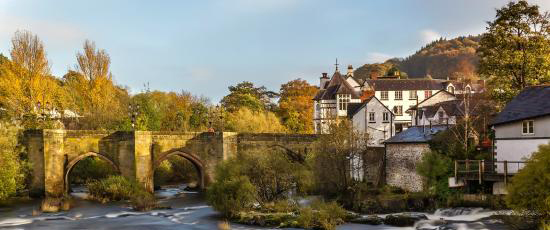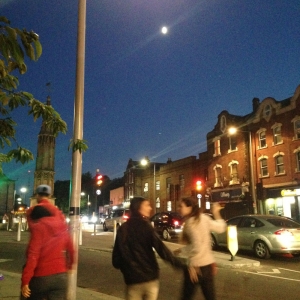Welsh jaunt
I believe fish are craftier than their glass-eyed gaze seems to indicate. Fly fishing is the art of luring a fish onto the hook by making it believe it is a true fly dancing on the surface of the water when in fact you, the fisherman, are the puppet master in control. But this never happened during our week-long stay in Penrhyn on the Menai Strait near the mouth of the Ogwen River. Even during the optimum time when the sea trout fed as the tide rose and entered the river, not one bite was had.
Fish are cleverer than they appear. Fish hold records for the relative brain weights of vertebrates, and most vertebrates have similar brain-to-body mass ratios – except for the bony-eared assfish which has the smallest ratio of all known vertebrates (I’m not kidding, this is its true name and it has endured eons of Piscean teasing as a result). Yes, fish know all about deception, distraction display, false courtship behaviour, death feigning, numeracy (look up the mosquitofish), play, food stocking and fisherman taunting.
We could see them jumping down river, or if we went down river, we’d see them upriver. At one point a large sea trout jumped right out in front of us, ignoring the lure, checked us out and decided we were harmless enough. We had better luck at the Bangor Seafood Co.
All unsuccessful fishing activity was witnessed by the many swans which live in the tidal sea by the mouth of the Ogwen. They are joined in the evenings by gulls and other sea birds and together create a chorus of plaintive sounds which are very melancholic but could be interpreted as the local wildlife jeering.
Ceramically, the whole experience is well summed up by the wavy green vase: lots of water but no fish, and the colours reflect those in the landscape, as in the image below.
But back to the Penrhyn area – it had been owned by the Pennant family until death duties forced them to hand over the 40,000 acre estate to the National Trust in the 1950s. The family had owned Jamaican sugar plantations since the middle of the seventeenth century, becoming established as merchants in Liverpool and London, while benefitting from the hundreds of enslaved African people working for them.
Richard Pennant (1737–1808), MP for Liverpool, invested the Jamaican profits in his agricultural estates and set up the Penrhyn Slate Quarry and built Port Penrhyn. He also built roads, railways, schools, hotels, workers’ houses, churches and farms, but still campaigned against the abolition of slavery. When slavery was finally abolished, the family received £14,683 compensation for 764 enslaved people on their Jamaican estates.
The Penrhyn quarry was the world’s largest slate quarry in the nineteenth century, its main pit being 1 mile long and worked by 300 quarrymen, who went on strike over pay in 1900. There was a massive gap between the wealth of Lord Penrhyn, living in his splendid castle, and the poverty of his workers, who lived in local quarrying communities. The strike lasted 3 years, the biggest in union history, until many returned to work out of hunger; but production was soon overtaken by foreign quarries and the decline set in.
Nowadays it is home to the fastest zip line in the world, Velocity 2, where you can fly 500m above the bright blue quarry lake, blue because of the dissolved natural minerals – copper sulphate. Other activities undertaken included a visit to a butterfly house on Anglesey where we met a chameleon.
And slate lies everywhere in Penrhyn – great slabs on the shore of the straits when the tide is out or washed over by the cool river water of the Ogwen, or used as fencing in fields, or just highlighting the green of the landscape with its dark presence.
On the tidal beach at Penrhyn the remains of old timber palisades or groynes still stick out of the sand. These groynes were constructed more or less perpendicular to the shoreline to restrict the movement of sediment along the shore but have long ago rotted away and now look like the ribs of some monster.
The familiar landscape back in Ledbury was a contrast, with all the varieties of green on display, and trees and meadows at their summer’s peak. Climbing up to CJ’s bench was a slog after the excesses of our Welsh break, but the view was rewarding, as ever, and a remider of how varied the landscapes of this island are.
Another view that required a hard slog up hundreds of steps was a visit to the top of St Michael’s tower in Ledbury, only recently opened to the public after a successful fundraising campaign to repair the eight bells and reinforce the structure.
Ledburians who read this blog, I climbed those steps so that you do not have to, but if you still feel compelled to do so yourselves, then I recommend it, not least for the view you get of the town from the parapet around the base of the spire.
Lastly, if you fancy reading another short story of mine, this one was published by Fairlight Books. Fairlight make all of the stories on their website freely available to readers, their aim is to fight the corner for the short story as a form of literature which is often hidden behind paywalls, and to promote and support the writing of these authors. Just click here.
Hwyl fawr













































































































